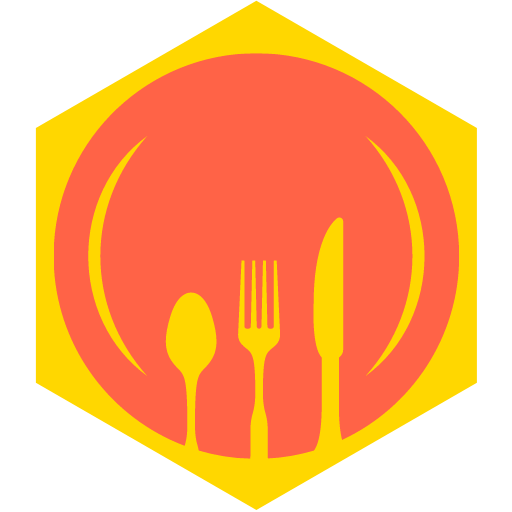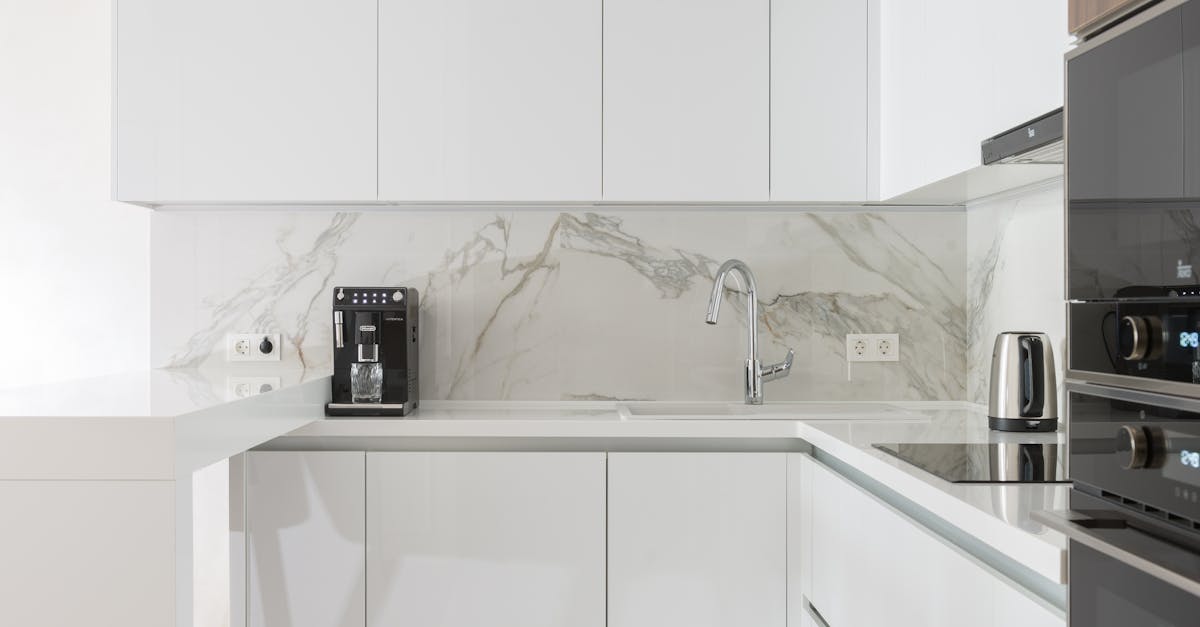Originally posted on April 30, 2025 @ 9:23 am
Navigating apps and websites should be effortless and intuitive. That’s where the Corner Tap Menu comes in, offering a sleek and efficient way to access key features without cluttering the screen. By tapping a specific corner, users can quickly open a menu that keeps important options right at their fingertips.
We’ve seen this design trend grow because it balances accessibility with simplicity. It’s perfect for mobile devices where screen space is limited but user experience can’t be compromised. Understanding how the Corner Tap Menu works and why it’s gaining popularity can help us create smarter, more user-friendly interfaces that keep people engaged and coming back.
What Is a Corner Tap Menu?
The Corner Tap Menu is an intuitive design pattern that activates a menu through a simple tap on a screen corner. Its ergonomic placement supports quick access to essential features, reducing navigation complexity on digital devices.
Definition and Overview
The Corner Tap Menu functions as a hidden or partially visible interface element triggered by tapping a corner area of a device screen, commonly found in mobile and tablet apps. It consolidates navigation and key commands into a compact zone, improving user experience (UX) by minimizing interruptions during tasks.
- Location: Typically positioned at one of the four corners of the screen.
- Activation: Triggered by a single tap or a subtle gesture.
- Purpose: Provides instant access to menus without consuming permanent screen space.
“Positioning controls in accessible screen corners harnesses natural thumb movements, enhancing overall device usability.” — Nielsen Norman Group
| Feature | Description | Benefits |
|---|---|---|
| Tap Sensitivity | Responds to single/few gestures near the corner | Fast activation, minimal error |
| Compact Design | Collapses to a small icon until engaged | Saves screen real estate |
| Customizable Options | Allows user-tailored menu entries | Improves workflow efficiency |
Common Use Cases
The Corner Tap Menu fits various scenarios where speed and minimal disruption matter most in interface design. It excels in environments demanding quick menu access without distracting from primary content.
- Mobile Apps: Accessing shortcuts for settings, notifications, or tools without leaving the current screen.
- Gaming Interfaces: Quick access to inventory, controls, or maps while maintaining immersive gameplay.
- Productivity Tools: Instant commands like copy, paste, or formatting adjustments accessible during document editing.
- Accessibility Features: Assists users with limited dexterity by reducing reach distance to key functions.
| Use Case | Example Apps/Contexts | User Advantage |
|---|---|---|
| Mobile Navigation | Social media apps, browsers | Efficient multitasking |
| Gaming | Mobile RPGs, action games | Seamless control without pausing |
| Productivity | Word processors, spreadsheets | Quick tool access, improved focus |
| Accessibility | Voice-over UI, one-handed modes | Easier reach and interaction |
Leveraging the Corner Tap Menu supports faster interaction flows and enhances device ergonomics by honoring natural user habits. This approach maintains interface clarity while delivering critical functionality where users expect it most.
Benefits of Using a Corner Tap Menu
Corner Tap Menus deliver practical advantages that elevate user interaction in mobile and desktop environments. Their strategic placement and intuitive operation boost accessibility, streamline user experience, and conserve valuable screen space.
Improved Accessibility
Corner Tap Menus enhance accessibility by offering quick, reachable access points that do not interfere with primary content. We enable users with limited mobility or dexterity to execute commands effortlessly, as the menu activates with a single tap or gesture in a defined corner.
- Support users with motor impairments through easy-to-hit zones.
- Reduce physical strain by minimizing hand travel distance on touchscreens.
- Provide alternative navigation pathways for assistive technologies.
“Accessibility is about designing for everyone, making interfaces usable without barriers.” — World Wide Web Consortium (W3C)
Enhanced User Experience
User experience improves as the Corner Tap Menu encourages smoother interaction flows and reduces cognitive load. It offers fast activation with low error rates by confining menu triggers to predictable screen corners, making navigation intuitive and efficient.
| User Experience Benefits | Details |
|---|---|
| Fast Activation | Instant menu reveal with one tap or gesture |
| Low Error Rate | Predictable corner positioning reduces mis-taps |
| Customizability | Options to personalize commands and shortcuts |
| Task Continuity | Minimizes interruptions during workflows |
This design optimizes engagement, letting users focus on tasks without navigating complex menu structures or losing context.
Space-Saving Design
Corner Tap Menus conserve screen real estate by hiding menus until needed, preserving valuable display area for primary content. Their compact nature means larger viewport space on mobile devices and cleaner interfaces on desktops.
- Eliminate permanent on-screen buttons that clutter layout.
- Consolidate multiple commands into a single, hidden control zone.
- Adapt seamlessly to various screen sizes without compromising usability.
| Aspect | Description |
|---|---|
| Screen Space Saved | Frees up to 15-20% screen area compared to fixed toolbars |
| Compact Interface | Reduces visual noise for streamlined design |
| Scalable Placement | Compatible with corners on phones, tablets, and monitors |
This approach makes the interface cleaner and more ergonomic, supporting diverse device contexts and user preferences.
How to Implement a Corner Tap Menu
Implementing a Corner Tap Menu requires a focus on intuitive design and seamless technical integration. We explore essential design principles, technical considerations, and popular tools to guide the creation of an efficient, user-friendly Corner Tap Menu.
Design Principles
We prioritize ease of access, minimal screen disruption, and ergonomic positioning when designing Corner Tap Menus. Key design principles include:
- Positioning: Place the tap area in a screen corner—top-left, top-right, bottom-left, or bottom-right—based on user hand dominance and app layout.
- Size and Hit Area: Ensure the tap zone measures at least 40×40 pixels, adhering to mobile touch target standards to reduce errors.
- Visual Cues: Use subtle icons or partial visibility to hint at the menu’s presence without occupying constant space.
- Animation: Implement smooth transitions to signal menu activation, minimizing cognitive load.
- Customization: Allow users to adjust corner placement or assign menu functions to suit preferences.
“Good design is invisible. Our goal is to make navigation effortless, letting users focus on their tasks, not the interface.”
| Aspect | Best Practice | Benefit |
|---|---|---|
| Positioning | Bottom right for right-handed users | Maximum reachability |
| Hit Target Size | Minimum 40×40 pixels | Reduces accidental taps |
| Visual Indicators | Soft glow or latch icon | Encourages user discovery |
| Feedback | Subtle animation on tap | Confirms action with clarity |
| Customization | Settings to move or disable menu | Enhances user control |
Technical Considerations
We integrate Corner Tap Menus with attention to performance, compatibility, and accessibility by addressing these technical factors:
- Touch Event Handling: Leverage efficient listeners (e.g.,
touchstart,click) while debouncing inputs to prevent multiple triggers. - Responsive Design: Adapt tap zones and layouts dynamically for various screen sizes and orientations.
- Accessibility Compliance: Implement ARIA roles and keyboard navigation support to ensure usability for users with disabilities.
- Performance Optimization: Avoid heavy scripts or animations that delay menu appearance on tap.
- State Management: Use robust state tracking to toggle menu visibility with minimal latency.
| Technical Factor | Implementation Detail | Impact |
|---|---|---|
| Touch Event Handling | Debounced touchstart and click |
Prevents double activation |
| Responsive Design | CSS media queries + dynamic JS layout | Consistent experience across devices |
| Accessibility | ARIA roles, keyboard focus traps | Inclusive usage for all users |
| Performance | Minimized DOM reflows, lightweight CSS | Fast, fluid interactions |
| State Management | React/Vue state hooks or vanilla JS variables | Precise control over menu visibility |
Popular Tools and Libraries
We leverage proven tools and libraries to accelerate Corner Tap Menu development and maintain best practices:
- Hammer.js: Enables advanced touch gesture recognition including corner tap detection.
- React-Tap-Event-Plugin: Simplifies tap event handling for React apps.
- Material-UI Menu Component: Provides highly customizable menu UI with animation and accessibility built-in.
- Interact.js: Allows draggable and interactive corner menus with flexible controls.
- ARIA Practices Guide by W3C: Offers precise implementation guidelines for accessible menus.
Choosing the right tools streamlines development and improves stability.
| Tool/Library | Purpose | Pros | Ideal For |
|---|---|---|---|
| Hammer.js | Touch gesture handling | Robust multi-touch support | Mobile apps requiring gestures |
| React-Tap-Event-Plugin | Tap events in React | Simplifies React integration | React-based frontends |
| Material-UI Menu | Prebuilt menu component | Customizable + accessible | Quick UI with standard design |
| Interact.js | Drag/drop and interaction handling | High customization | Complex interactive menus |
| W3C ARIA Guide | Accessibility standards | Ensures compliance | Accessibility-focused projects |
By applying these design and technical guidelines, and leveraging appropriate tools, we create Corner Tap Menus that enhance usability, conserve screen space, and deliver a natural interaction experience.
Comparing Corner Tap Menu to Other Navigation Styles
Understanding how the Corner Tap Menu compares to alternative navigation methods reveals its unique strengths and suitability for various UX scenarios. We explore this by contrasting it with traditional menus and swipe or gesture controls, focusing on accessibility, screen usage, and user efficiency.
Traditional Menus vs. Corner Tap Menus
Traditional menus rely on permanent or dropdown elements that occupy visible screen space. In contrast, Corner Tap Menus stay hidden until activated, optimizing screen real estate significantly.
| Feature | Traditional Menus | Corner Tap Menus |
|---|---|---|
| Screen Space Usage | Constantly visible, reduces viewport | Hidden until tapped, maximizes space |
| Accessibility | Requires precise tapping or pointing | Easy to activate with large hit zones |
| User Efficiency | May interrupt workflow with overlays | Enables seamless task continuity |
| Customization | Limited, often static | Highly customizable to user needs |
| Learning Curve | Familiar but can clutter interfaces | Intuitive with visual cues and animations |
“Corner Tap Menus shift navigation from being a constant visual presence to an on-demand tool, empowering users to focus on content without distraction.” — UX Design Insights, 2023
Traditional menus excel in familiarity but compromise clean interfaces. Corner Tap Menus offer a cleaner, more ergonomic solution that reduces cognitive load and physical reach, especially on mobile devices.
Swipe and Gesture Controls
Swipe and gesture controls expand interaction possibilities by leveraging natural touch motions. Comparing these to Corner Tap Menus highlights differences in precision, discoverability, and error rates.
| Aspect | Swipe & Gesture Controls | Corner Tap Menus |
|---|---|---|
| Activation Precision | May suffer from misinterpretation | Precise single-tap triggers |
| Discoverability | Hidden gestures can be obscure | Visual cues improve awareness |
| Error Rate | Higher due to gesture complexity | Lower from simple tap action |
| Learning Curve | Steep for new users | Gentle with clear interactive elements |
| Customization | Often limited to set gestures | User preferences configurable |
Swipe gestures shine in immersive experiences, like gaming or multimedia apps, but risk accidental triggers or user frustration. Corner Tap Menus balance ease of use and discoverability, making them well-suited for productivity and accessibility-focused applications.
We observe that when precision and screen conservation are priorities, the Corner Tap Menu outperforms many traditional and gesture-based navigation styles, proving its value as a versatile UX tool.
Real-World Examples of Corner Tap Menus
Corner Tap Menus enhance usability across platforms by providing quick access to essential functions with minimal screen intrusion. Let’s explore how mobile apps and websites utilize this feature to boost efficiency and user satisfaction.
Mobile Apps
Mobile apps widely adopt Corner Tap Menus to optimize limited screen space and improve navigation speed. These menus often appear in one of the four corners, activated by a tap, reducing the need for complex gestures or multiple taps.
| App | Use Case | Benefits | Corner Position |
|---|---|---|---|
| Quick access to camera/tools | Speeds up content creation | Bottom right | |
| Microsoft Outlook | Access to settings/compose | Streamlines email management | Top right |
| Fitbit | Navigation shortcuts | Enables swift health data tracking | Bottom left |
| PUBG Mobile | Instant weapon/item controls | Improves gaming responsiveness | Top left |
- Instagram’s bottom-right corner menu allows users to seamlessly switch between capturing images and browsing feeds without cluttering the interface.
- Microsoft Outlook places important functions, like new message composition, in the top-right corner, reducing workflow interruptions.
- Fitbit leverages the bottom-left corner for quick access to health metrics, supporting active on-the-go monitoring.
- PUBG Mobile integrates crucial in-game controls in the top corner for rapid response, enhancing gameplay precision.
“Corner Tap Menus in mobile apps facilitate one-handed use, making complex actions accessible with a simple tap.” — Nielsen Norman Group
Websites
Websites implement Corner Tap Menus to maintain a clean interface while providing immediate access to navigation and tools. These menus often appear as subtle icons that expand on tap, improving usability without overwhelming the layout.
| Website | Functionality | User Experience Impact | Corner Location |
|---|---|---|---|
| Trello | Quick board/menu access | Enhances project management speed | Top left |
| Slack (Web version) | Emoji/reaction menu | Boosts communication interactivity | Bottom right |
| Amazon | User account/cart shortcuts | Simplifies shopping navigation | Top right |
| Google Keep | Note actions and settings | Supports fast note editing | Bottom right |
- Trello uses a top-left corner menu for accessing boards and settings without disrupting task views.
- Slack places the emoji menu in the bottom-right corner for rapid emotional expression during chats.
- Amazon places the account and cart options at the top-right corner, giving users quick checkout access.
- Google Keep provides note actions in the bottom-right corner, allowing users to edit and archive without losing focus.
“Corner anchors on websites balance accessibility and minimalism by hiding advanced options until needed.” — Smashing Magazine
Corner Tap Menu Positioning Overview
| Platform | Preferred Corner | Primary Purpose | Key Benefit |
|---|---|---|---|
| Mobile Apps | Bottom right/left, top left/right | Accelerate frequent actions | One-handed ease, screen space saved |
| Websites | Top left/right, bottom right | Streamline navigation | Maintain clean layout, quick access |
Incorporating Corner Tap Menus across mobile apps and websites taps into natural hand placement and visual ergonomics, enhancing engagement and speed. By keeping critical commands accessible yet unobtrusive, these menus redefine efficient interaction in both mobile and desktop environments.
Conclusion
The Corner Tap Menu stands out as a smart solution for optimizing screen space while enhancing user interaction. Its precise activation and customizable nature make it an ideal choice for a wide range of applications, from mobile apps to desktop interfaces.
By integrating this feature thoughtfully, we can create more ergonomic and accessible experiences that keep users engaged without overwhelming the screen. Embracing the Corner Tap Menu means prioritizing both functionality and simplicity in our designs, ultimately delivering smoother and more intuitive navigation.
Frequently Asked Questions
What is a Corner Tap Menu?
A Corner Tap Menu is a UX design feature that lets users access key functions by tapping a specific screen corner. It saves screen space by hiding menus until activated, improving navigation, especially on mobile devices.
How does the Corner Tap Menu improve user experience?
It enhances UX by providing quick, error-free access to commands without interrupting workflow, conserving screen space, and supporting ease of use for users with varying physical abilities.
Where is the Corner Tap Menu typically located?
It is usually positioned in one of the four screen corners, chosen based on user hand dominance and ergonomic principles for easy and natural activation.
What are the main benefits of using a Corner Tap Menu?
Benefits include fast access, reduced screen clutter, lower error rates, customizable options, better accessibility, and improved workflow efficiency across apps and websites.
In which types of applications is the Corner Tap Menu commonly used?
It’s popular in mobile apps, gaming interfaces, productivity tools, and accessibility-focused applications for quick access to shortcuts and commands.
How does the Corner Tap Menu compare to traditional menus?
Unlike traditional menus that take up permanent space, Corner Tap Menus remain hidden until needed, preserving screen real estate and allowing uninterrupted task flow.
What about Corner Tap Menus versus gesture controls?
Corner Tap Menus offer more precision and lower error rates, with clearer visual cues, making them more reliable than complex gesture controls.
What design principles are key to implementing a Corner Tap Menu?
Key principles include optimal corner placement, appropriately sized touch zones, clear visual hints, smooth animations, and customization options for user preferences.
What technical considerations are important for Corner Tap Menus?
Developers should focus on responsive design, efficient touch event handling, accessibility compliance, smooth performance, and effective state management.
Are there recommended tools for developing Corner Tap Menus?
Yes. Popular tools include Hammer.js for touch gesture recognition and Material-UI for customizable menu components.
How do Corner Tap Menus enhance accessibility?
They create easy-to-target zones, reduce physical strain, and provide alternative navigation options, helping users with limited dexterity or mobility.
Can Corner Tap Menus be used on desktop devices?
Yes, they can improve desktop UX by saving screen space and facilitating quick access to functions through intuitive corner taps or clicks.
Which companies or apps use Corner Tap Menus?
Apps like Instagram, Microsoft Outlook, Fitbit, PUBG Mobile, and websites like Trello, Slack, Amazon, and Google Keep utilize them to streamline user interaction.
How does Corner Tap Menu positioning affect usability?
Strategic placement based on natural hand positions ensures easier reach, faster activation, and better overall user comfort and satisfaction.


